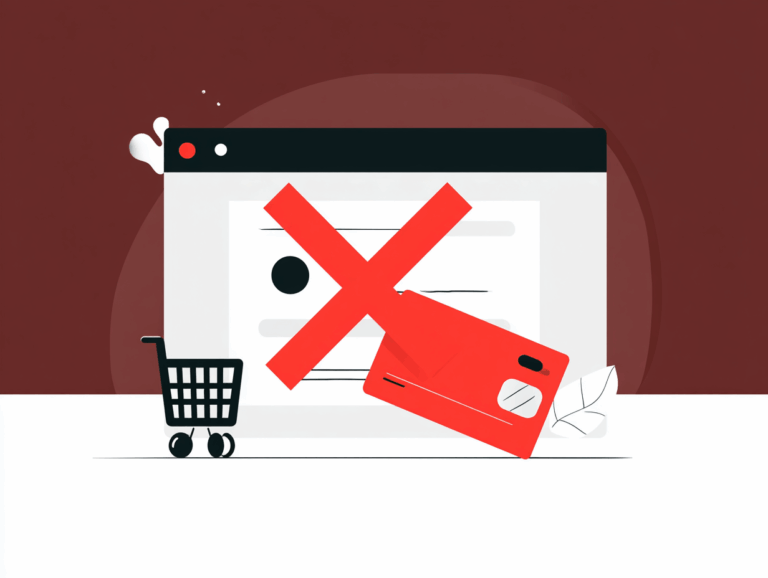Friendly fraud is one of the most annoying yet seemingly avoidable types of fraud. Many merchants are left wondering what they’ve done wrong or why their customers are mistreating them.
One day you’re in the black, and the next your chargeback ratio spikes beyond acceptable limits. Your payment processor flags your account. Your rolling reserves increase. Your business is at risk of closure.
Welcome to first-party misuse—the silent killer of merchant accounts.
PROTECT YOUR BUSINESS FROM FRAUD
What Is Friendly Fraud?
Friendly fraud occurs when legitimate customers dispute valid transactions through their bank or credit card company instead of contacting the merchant directly.
These customers received their products or services but claim they didn’t authorize the purchase, never received the item, or deserve a refund for another reason.
Unlike criminal fraud, where stolen card information fuels unauthorized transactions, friendly fraud involves real customers using their own payment methods. They make legitimate purchases but later dispute them through the chargeback process rather than working with the merchant to resolve issues.
The term “friendly” misleads many business owners. There’s nothing friendly about fraud. Some customers genuinely forget about purchases or don’t recognize transaction descriptions on their statements. Others deliberately abuse the chargeback system to get free products or services. Both scenarios create headaches for merchants.
KEEP YOUR CHARGEBACK RATIO LOW
How Friendly Fraud Differs from Criminal Fraud
Criminal fraud involves stolen payment information, identity theft, or unauthorized account access. Criminals use fake or stolen cards to make purchases they never intend to pay for. Merchants can often identify these transactions through unusual spending patterns, mismatched billing information, or suspicious IP addresses.
Friendly fraud is entirely different. The customer owns the payment method, matches the billing information, and often provides legitimate shipping addresses. The transaction appears normal during processing. Problems surface weeks or months later when the customer initiates a chargeback.
Banks typically side with cardholders in friendly fraud disputes. The customer claims they didn’t make the purchase or never received the product. Without compelling evidence, merchants lose these chargebacks more often than they win them.
Common Examples Across Industries
E-commerce Retailers
Online shoppers frequently claim they never received items, even when tracking shows successful delivery. They might say the package was stolen, delivered to the wrong address, or contained different items than ordered.
Some customers receive products, use them, then dispute the charge claiming the items were defective or not as described.
Digital Products and Software
Customers download software, e-books, or online courses, then claim they never authorized the purchase. They might use the product for weeks before initiating a chargeback, knowing the merchant can’t “retrieve” digital goods once delivered.
Subscription Services
Subscribers forget about recurring billing or share login credentials with family members who later dispute charges. Some customers deliberately let subscriptions run while planning to dispute all charges later. Others claim they canceled subscriptions that automatically renewed.
Information Products and Coaching
Customers purchase online courses, coaching programs, or informational products, consume the content, then claim it wasn’t what they expected. They might attend live sessions or download materials before disputing the transaction weeks later.
High-Ticket Items
Buyers of expensive products sometimes experience buyer’s remorse. Instead of following the merchant’s return policy, they dispute the charge with their bank, hoping to keep both the product and their money.
HIGH-RISK INDUSTRIES NEED HIGH-RISK PAYMENT PROCESSING
Why Winning Friendly Fraud Chargebacks Is So Difficult
Banks operate under the assumption that customers tell the truth. When cardholders claim they didn’t make a purchase or never received an item, banks typically approve the chargeback request without extensive investigation.
Merchants must provide compelling evidence to overturn these decisions. This evidence might include:
- Signed delivery receipts
- Customer communication acknowledging the purchase
- IP address logs matching the customer’s location
- Previous successful transactions with the same customer
- Evidence of product or service usage
Gathering this evidence takes time and resources. Many merchants lack the systems to collect and organize proof effectively. Even with strong evidence, banks don’t always rule in the merchant’s favor.
The chargeback process favors consumers by design. This protection encourages credit card usage but creates an uneven playing field for merchants dealing with dishonest customers.
DECREASE DISPUTES AND CHARGEBACKS
Impact on Merchant Account Standing
Payment processors monitor chargeback ratios closely. Most processors require merchants to maintain chargeback ratios below 1% of total transactions. High-risk industries might face stricter thresholds of 0.5% or lower.
Excessive friendly fraud pushes merchants beyond these limits quickly. Each chargeback counts against the ratio regardless of whether the merchant wins or loses the dispute. Even successfully defended chargebacks damage merchant standing.
Rolling Reserves
Processors protect themselves from chargeback liability by holding portions of merchant funds in rolling reserves. These reserves can range from 5% to 20% of processing volume, depending on the merchant’s risk profile.
Friendly fraud increases reserve requirements. Processors hold more money for longer periods, impacting cash flow. Some merchants face reserve percentages that make business operations difficult.
Account Termination
Persistent friendly fraud problems lead to account termination. Processors close accounts that consistently exceed chargeback thresholds, leaving merchants scrambling to find new payment solutions.
Terminated merchants often get blacklisted across processor networks. This “MATCH list” designation makes finding new merchant accounts extremely difficult and expensive.
KEEP YOUR BUSINESS SAFE FROM THE MATCH LIST
Red Flags in Customer Behavior
Merchants should watch for patterns that suggest potential friendly fraud.
Communication Avoidance: Customers who dispute charges without attempting to contact the merchant first show red flags. Legitimate customers usually reach out about problems before involving their banks.
Rushed Purchases: Buyers who make large purchases immediately after account creation might plan to dispute charges later. They haven’t established trust or demonstrated genuine interest in ongoing relationships.
Unusual Shipping Requests: Customers requesting expedited shipping to different addresses than their billing information might indicate fraud intent. They want products quickly before disputing payments.
Repeat Disputes: Customers with histories of chargebacks across multiple transactions present obvious risks. Their behavior patterns suggest systematic abuse rather than isolated issues.
Generic Complaints: Vague dispute reasons like “product not as described” without specific details often indicate friendly fraud attempts. Legitimate customers provide detailed explanations of problems.
Prevention Strategies and Tools
Clear Communication
Write detailed product descriptions that accurately represent what customers receive. Use multiple photos, videos, and customer reviews to set proper expectations. Clear descriptions reduce legitimate disputes and strengthen evidence in chargeback fights.
Communicate throughout the fulfillment process. Send order confirmations, shipping notifications, and delivery confirmations. These communications create paper trails that support merchants in disputes.
Robust Policies
Develop clear return, refund, and cancellation policies. Make these policies visible during checkout and easy to find on your website. Train customer service teams to apply policies consistently.
For subscriptions, send renewal reminders before charging customers. Make cancellation processes simple and clearly documented. Complex cancellation procedures fuel friendly fraud attempts.
Chargeback Alerts
Chargeback alert services notify merchants when customers initiate disputes. These services provide windows to issue refunds before chargebacks become official. Refunds don’t count toward chargeback ratios, protecting merchant standing.
Popular alert services include Verifi CDRN and Ethoca alerts. While these services cost money per notification, they often prove cheaper than chargeback fees and ratio damage.
Compelling Evidence Systems
Build systems that automatically collect evidence for potential disputes:
- Log IP addresses and device information for all transactions
- Track delivery confirmations and customer interactions
- Screenshot digital product downloads and usage
- Record customer service calls and chat transcripts
- Monitor user activity in subscription accounts
Organize this evidence in accessible formats. Quick access to comprehensive documentation improves chargeback win rates significantly.
Customer Authentication
Implement strong customer authentication during checkout. Require customers to verify email addresses and confirm billing information. Multi-factor authentication for high-value purchases adds protection layers.
Consider requiring phone verification for new customers making large purchases. Legitimate buyers willingly provide verification, while fraudsters often abandon transactions.
CONNECT WITH A GATEWAY THAT COLLECTS MORE
What Payment Processors Monitor
Processors evaluate merchant risk through multiple metrics.
Chargeback Ratios: The primary metric most processors track. Ratios above 1% trigger increased scrutiny and potential account restrictions.
Dollar Volume of Disputes: Large chargeback amounts concern processors even if ratios remain low. A single high-value dispute can trigger reviews.
Win/Loss Ratios: Merchants who consistently lose chargeback disputes face higher risk classifications. Processors want merchants who actively fight and win disputes.
Response Times: Quick responses to chargeback notifications demonstrate merchant engagement. Delayed responses suggest poor dispute management practices.
Refund Ratios: High refund rates combined with high chargeback rates indicate potential problems. Processors prefer merchants who resolve issues before disputes arise.
Staying Off the High-Risk List
Proactive Monitoring: Track chargeback metrics daily rather than waiting for monthly processor reports. Early detection enables faster problem resolution.
Staff Training: Train customer service teams to identify and prevent potential disputes. Empowered representatives can resolve issues before customers contact banks.
Industry Compliance: Follow industry best practices for your vertical. Subscription businesses should implement clear billing descriptors and easy cancellation processes. E-commerce merchants need robust fraud screening and clear return policies.
Professional Relationships: Maintain open communication with payment processor risk teams. Report problems early and work collaboratively on solutions.
Documentation Everything: Keep detailed records of all customer interactions, policy acknowledgments, and fulfillment confirmations. Strong documentation wins disputes and demonstrates merchant professionalism.
INCREASE CONVERSIONS, REDUCE CHARGEBACKS
Fighting Back Against Friendly Fraud
Friendly fraud threatens every merchant’s bottom line and account stability. However, businesses can fight back through preparation, documentation, and proactive customer service.
Start by examining your current chargeback data. Identify patterns in dispute types and customer behaviors. Use this information to strengthen weak points in your processes.
Invest in the right tools and training. Chargeback alert services, evidence collection systems, and staff education pay for themselves through reduced disputes and better win rates.
Remember that prevention costs less than fighting chargebacks after they occur. Clear policies, excellent customer service, and proactive communication stop many disputes before they start.
The payment processing landscape continues evolving, but friendly fraud remains a persistent threat. Merchants who understand the problem and implement comprehensive prevention strategies protect their businesses and maintain healthy processor relationships.
Stay vigilant, document everything, and never assume friendly fraud won’t affect your business. With proper preparation and execution, you can minimize its impact and keep your merchant account in good standing.









